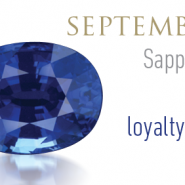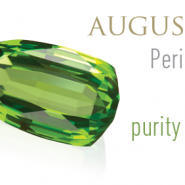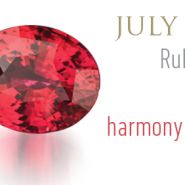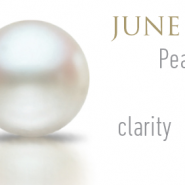Opal, October’s birthstone, is a captivating gemstone because of its unique optical characteristics. Opals often exhibit a spectrum of colors called “play-of-color,” which is when viewed from various directions. The Roman naturalist, Pliny the Elder, referred to opal’s play-of-color in the 1st century AD when he wrote: “For in them you shall see the living fire of ruby, the glorious purple of the amethyst, the sea-green of the emerald, all glittering together in an incredible mixture of light.”
Read More >>September’s birthstone, the sapphire, is known for its various shades of blue, however, these gemstones come in every color of the rainbow. A red sapphire is actually a ruby, the September gem’s sibling. Both of these gems are made from the durable mineral corundum. The rare pink orange variety known as padparadscha is especially prized, named after the color of a lotus flower.
Read More >>Peridot, the August birthstone, is the gem variety of the mineral olivine. Instantly recognizable with its distinctive lime green color, peridot is known as the “extreme” gem because it is only found in harsh conditions. It is mined from rocks created by volcanoes and even found in meteorites that fall to Earth.
Read More >>Ruby, July’s birthstone, has been esteemed since ancient times, even mentioned in the Bible as one of the gems used to represent one of the 12 tribes of Israel.
Read More >>Most gems form within the Earth, but June’s birthstone, pearl, is unique because it is formed in the soft tissue of a living mollusk. Natural pearls are rare; most are cultured by implanting a bead into the mollusk and letting the mollusk coat the bead with nacre for up to two years before the pearl is harvested.
Read More >>





